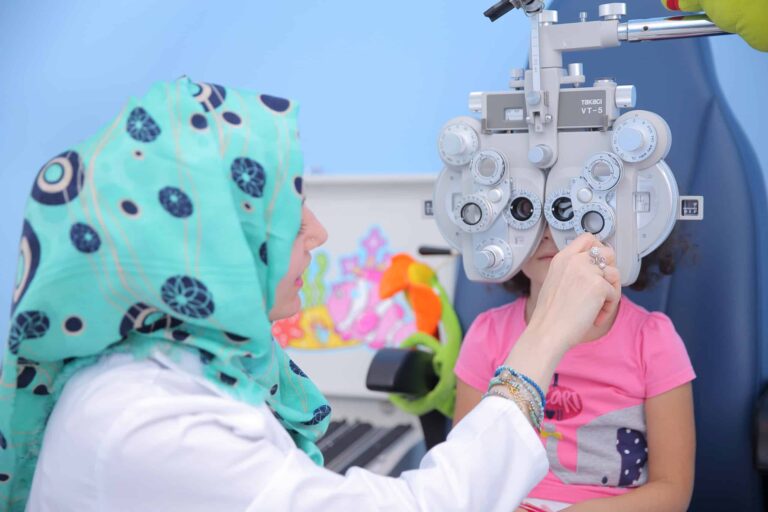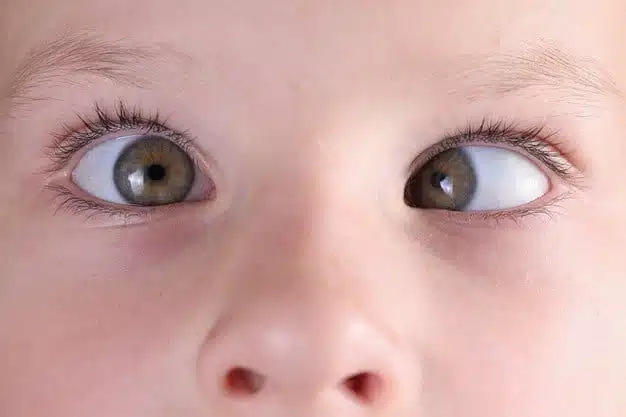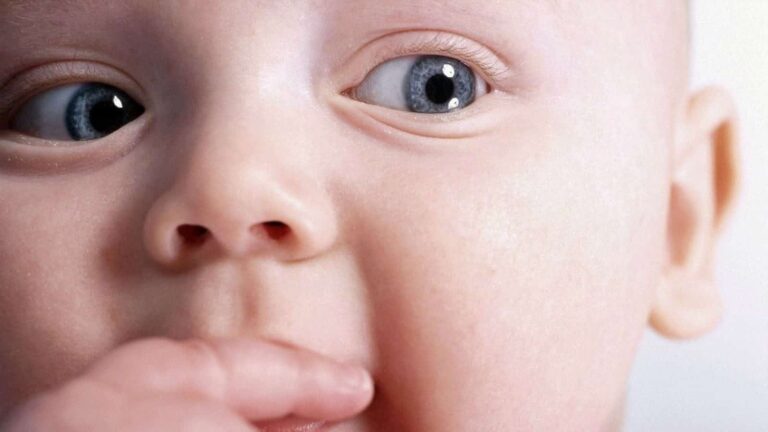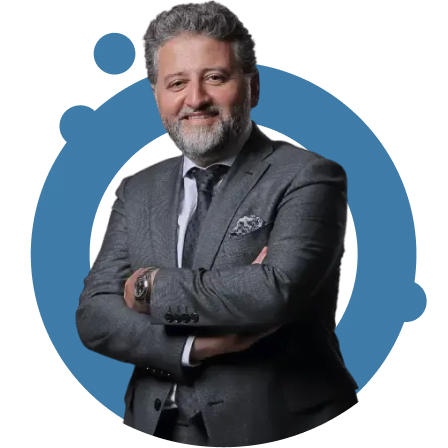Treatment and surgery of squint in children
Treatment and surgery of squint in children
Eye squint in children is a medical condition in which the eyes do not correspond with each other. It is a common disease in children and the primary treatment is surgery.
The doctors of the pediatric Squint Surgery Unit at Batal Specialist Complex do not remove the eye for strabismus surgery, and the fact that no one does this is one of the common misconceptions about squint surgery.
Strabismus treatment
Strabismus is a common condition among children that occurs when the eyes point in different directions (skewed). One eye may look straight ahead and the other eye inward, up, or down. We will learn here about the cause of sudden eye squint in children and squint in infants. How to treat around the left eye in children.
It is recommended to visit the Eye Center in Al-Batal Specialist Complex in Jeddah, Saudi Arabia, due to the experience of our doctors, the quality of our technical equipment, the provision of complete care, and to obtain treatment for strabismus in infants and young children.
Treatment of squint eye by surgery
Treatment and surgery in children, squint surgery can be performed from a very young age, and the only difference between surgery in compared to infants is the functional results that may differ slightly.
We perform squint operations for children at Batal Specialist Complex using general anesthesia, the child will be asleep and will not feel anything during the operation, which takes from one to two hours, the doctor makes a small incision in the tissues that cover the eye to reach the eye muscles and then re-coordinates the muscles to help the eyes to see In the same direction. The doctor may perform the operation in one eye or both, depending on the case.
After surgery, the redness of the eye may last for a week and then disappear gradually, and the eyes may appear a little swollen, and the child returns to his normal life within one to five days, and the results of the surgery may appear immediately after the operation ends, or it may take 4 to 6 weeks to see if it is successful.
We recommend that after strabismus surgery for children:
- Avoid getting soapy water or shampoo into the eyes.
- Avoid rubbing the eyes.
- Avoid violent play such as high-speed running, wrestling, or games that require visual focus.
- Avoid swimming.
- We do not recommend returning to school for the two weeks after the operation.

Treatment and surgery of squint in children
Squint surgery is an effective treatment in most cases, after which the child can restore binocular vision and expand the field of vision in some cases, and it can protect against vision loss. And the experiences of squint surgery for children say that the success rate of squint surgery is very high, so it is suitable for all ages. Is the surgery painful? It is not usually painful, but the child may feel some discomfort for several days after the operation.
Strabismus treatment
Strabismus is a common condition among children that occurs when the eyes point in different directions (skewed). One eye may look straight ahead and the other eye inward, up, or down. We will learn here about the cause of sudden eye squint in children and squint in infants. How to treat around the left eye in children.
It is recommended to visit the Eye Center in Al-Batal Specialist Complex in Jeddah, Saudi Arabia, due to the experience of our doctors, the quality of our technical equipment, the provision of complete care, and to obtain treatment for strabismus in infants and young children.
Many people have the misconception that these issues disappear as the child grows and over time. The truth is that this idea is only partially correct in cases such as pseudomembranous strabismus, in which the eye is not injured or damaged, but the problem is in the excess skin of the eyelid or the flattening of the nasal bone and with the complete growth of the nasal and facial bones, the false strabismus will disappear.
The cause of sudden eye squint in children or squint in infants is caused by eye muscles that do not work in harmony. Squint occurs in infants more than others, and the reasons include the following:
Children with a family history of strabismus, particularly having a parent or sibling with crossed eyes.
Farsighted children.
Children who have had trauma to the eye on the example of cataract surgery.
Children with neurological problems or brain development where the nerves in the eyes send signals to the brain to coordinate movement. Therefore, children who are born prematurely or suffer from conditions such as Down syndrome, cerebral palsy, and brain injuries have a higher chance of developing strabismus of some kind.
In the children’s eye clinic, the doctor may decide to treat mild eye deviation in your child by prescribing bifocal glasses, eye muscle exercises, or patching to force the brain to use the affected eye and to straighten the child’s eye. In some cases, botox injections can help in treating strabismus because it paralyzes the muscles that prevent the eye from aligning properly and its effect can last for only a few months and permanent improvement can occur in the eye.
Some children may need corrective surgery in one eye or both, and more than one operation may be needed to correct the deviation of the eye
Surgery is the basis of the treatment of squint in children, but in some cases, the degree of deviation of the eye is not large and there is no need for surgical intervention, the doctor resort to other options to treat the squint:
- Glasses or contact lenses to treat uncorrected refractive errors.
- Prismatic lenses are special lenses that can refract the beam of light that enters the eye and help reduce eye rotation when looking at objects. A prism can be attached to the glasses or made as part of the lens to help reduce double vision.
- Eye exercises to correct eyesight, which gives positive results in a number of cases according to the degree of strabismus, when the eye cannot follow close objects.
- Eye drops and ointments or botox injections weaken an overactive eye muscle and these treatments can be used in combination with or instead of surgery.
- Patching to treat lazy eye if a person suffers from it at the same time as a squint
It is preferable to treat squint in children using eye patches and glasses with or without atropine drops, and if these treatments do not work, the ophthalmologist may recommend surgery for the eye muscles, and in most cases, children return home the same day after surgery.
While adults are treated differently depending on the degree of squint. In mild to mild cases of strabismus, optical treatments such as vision correction prism are preferred, but if the desired result does not occur here, the doctor advises performing the operation.
With our long experience in treatment and surgery around children and adults, the Batal Eye Specialist Center team, with more than 10 years of experience, ensures a comprehensive eye examination before setting up a strabismus treatment plan for children that fits every child’s case. This will be carried out under the supervision of a pediatric ophthalmologist using the latest diagnostic devices in the treatment and surgery of children and adults
Early diagnosis of strabismus eye
Early diagnosis and treatment of strabismus are necessary to prevent the risk of lazy eye or amblyopia that occurs as a result of the deviation of vision in one eye when the nerve pathways between it and the brain do not function normally and thus the brain cannot detect vision with one eye. Over time, the brain depends more on the other, correct eye, while the affected eye worsens more and is susceptible to complications such as vision loss or double vision.
Squints in children are successful if the diagnosis is started early. When these conditions are observed, it is understood that they are the result of progressive strabismus that was not treated in childhood. However, there are some rare cases in which a person did not have a squint in his childhood, but appeared in adulthood due to an eye injury or sudden disease.

The cause of sudden squint in children
It is a common misconception that all squints are hereditary, but the truth is that strabismus appears at different age stages in early or late childhood and early adulthood or old age.
And strabismus occurs in children because of a disorder in the eyes, eye muscles, brain, or nerves. Most cases of strabismus or ocular aberration are caused by a defect in the muscles that control eye movement, and in 30% of cases, it is hereditary. And it appears in children at the age of 3 years and can appear in children at an older age, in this case, may indicate a serious neurological disorder and if this occurs, you should consult a doctor immediately.
Strabismus may be caused by serious eye diseases, such as a tumor in the eye, infection, or cataracts in adults, and it may be a symptom of other diseases unrelated to the eye, including the thyroid gland, diabetes, stroke, brain tumors, trauma or a blow to the head. Depending on the patient’s condition, the doctor will determine the appropriate treatment for each problem.
If the treatment of squint is neglected, this may result in several symptoms besides lazy eyes, including:
- Headache.
- Fatigue.
- Eye strain.
- Blurry vision.
- Double vision.
- 3D vision impairment.

Deviation of the eye in children
The doctor in the children’s eye clinic may decide to treat minor eye deviations in children by prescribing bifocal eyeglasses, exercises for the eye muscle, or patching to force the brain to use the affected eye and to straighten the child’s eye. In some cases botox injections can help treat amblyopia because it paralyzes the muscles that prevent the eye from aligning properly and its effect can only last for a few months and a permanent improvement can occur in the eye.
Or the doctor decides to perform surgery to correct the eye if the deviation of the eye persists after previous treatments. Some children may need corrective surgery on one or both eyes, and more than one operation may be needed to correct astigmatism.
أو يقرر الطبيب إجراء جراحة لتصحيح العين إذا استمر انحراف العين بعد العلاجات السابقة. بعض الأطفال قد يحتاج إلى عملية تصحيحية في عين واحدة أو الاثنتين وقد تكون هناك حاجة إلى أكثر من عملية لتصحيح انحراف العين.

Treatments for squint in children
One or more types of strabismus treatment in infants or left eye squint treatment in children may be recommended depending on the child’s age and eye alignment. It aligns the eyes properly and allows for good vision.
Correction or opacification may be recommended to help strengthen the deviated eye that is weaker than the other. The child is also prevented from using their stronger eye by wearing an eye patch or using eye drops. This forces them to use the weaker eye, which helps strengthen it over time.
Sometimes children are taught to do some eye muscle exercises to help focus both eyes inward. If glasses or eye exercises do not help, surgery is recommended.
The Eye Center at Al Batal Specialized Complex in Jeddah is great for treating strabismus in infants, treating around the left eye in children, knowing the cause of sudden eye squint in children, and providing them with full care.
It is preferable to treat strabismus in children using eye patches and glasses with or without atropine drops. If these treatments do not work, the ophthalmologist may recommend eye muscle surgery. In most cases, children return home on the same day after surgery.
While adults are treated differently depending on the degree of strabismus. In mild to moderate cases of strabismus, optical treatments such as prism correction of vision are preferred, but if the desired result does not occur here, the doctor will advise an operation.

Senior Consultant, Pediatric Surgery and Eye Surgery Fellow of the British Royal Surgical College Fellow of the American Academy of Ophthalmology
Specialization: Strabismus and pediatric eye surgery
Degree: Member of the British Royal College of Surgeons and Member of the American Academy of Ophthalmology


